Dr. Tony Boatwright: ABL Labs and Kinesthetic Classrooms - Richland County School District Columbia, SC
In recognition of ABL's Leaders of the Movement, we are pleased to introduce Dr. Anthony N. Boatwright, Richland County School District One, Health and Physical Education Coordinator. Dr. Boatwright has played an integral role in leading the transformation from traditional learning to Action Based Learning in the district. The initiative began as a way to provide students an advantage to learn, by incorporating movement into the learning environment. Today, the focus is not only on academics, but using ABL to improve the overall well being of each and every student. Richland One has quickly become a model school for innovation across the state of South Carolina. The recognition comes well deserved, as the passion and dedication for their students remains the driving force behind their successful program.
Meet Dr. Boatwright
How did your passion for Action Based Learning begin?
As a middle school math teacher many years ago, I discovered the significant benefit to making math fun and engaging for students, by incorporating movement. I quickly recognized movement in the classroom was improving student learning. Little did I know at the time that I was using a lot of brain science in my teaching strategies during this phase of my career! It was not until recently, when I visited a high school in North Charleston and discovered “The Brain Room.” It was an amazing concept of what I did many years ago in my own classroom. The Brain Room utilized movement to teach various subjects, and was based on the brain research that shows movement prepares the brain for learning. This concept triggered me to return to Richland One and share what I had discovered to our district administration.
How were you able to turn your dream into a reality at Richland One?
Our Executive Directors of Schools requested my input with a particular concern regarding disciplinary problems. After visiting the school, she noticed the problem was not necessarily a matter of disciplinary actions. The students were simply “fidgety” and needed to move (especially the male students)! We decided something must be done to provide a solution for our students, and provide them what they need to learn. Of course, I immediately thought about implementing Action Based Learning. After we had the idea down on paper we had very supportive stakeholders (e.g., district administration, school board members) who quickly assisted our plan and moved forward with implementing movement school wide. This lead to the creation of a Kinesthetic Classroom, a Pre-K - 2nd grade Action Based Learning Lab, and a 3rd – 5th grade Action Based Learning Lab. The classes are scheduled to come to the lab twice a week for thirty minutes. Watkins Nance is currently the only school in the district that has three fully functional 21st century learning environments, in which we use for both teaching and intervention for students. However, a number of our schools are quickly building up their Kinesthetic Classrooms to employ what has become a highly successful initiative!
How has Action Based Learning impacted your students?
We have seen improvements in student participation and higher engagement in classroom activities, especially when they are paired with another student. This allows for socialization, which is a vital skill for children at this age to strengthen. Since the implementation of the Action Based Learning Labs, our instructional leaders shared the most drastic improvement among students has been:
- Increased participation
- Better attention span, more alert
- Increased motivation and student engagement
Our team is anticipating continuing to grow the program and further track data and research the full extent of the impact that Action Based Learning has on our students.
What advice would you give to schools interested in implementing ABL?
Every school has a different set of needs, so your ABL program may look different than ours. Some schools prefer to practice ABL in the classrooms, and not necessarily a lab. Others prefer to start small with things like flexible seating, and build from there . It all depends on a variety of factors, mainly the specific needs of your students. Our ABL Instructional Leaders provided the best advice:
- Design your program around the student needs. Look at the student data and assess the need for improvement, such as behavior, academics, or attendance.
- Designate an ABL coordinator. Make sure you have a person or team in mind who are energetic and passionate about taking the lead at your school.
- Be flexible. If implementing movement into the learning environment is new to the school, there will be an adjustment period. Always remember to assess, and continue to improve every day. and make necessary changes as needed.
A HUGE thank you and congratulations to Dr. Boatwright, the Watkin's Nance Elementary Team, and Richland One District for leading the movement towards a better future for each and every student.



